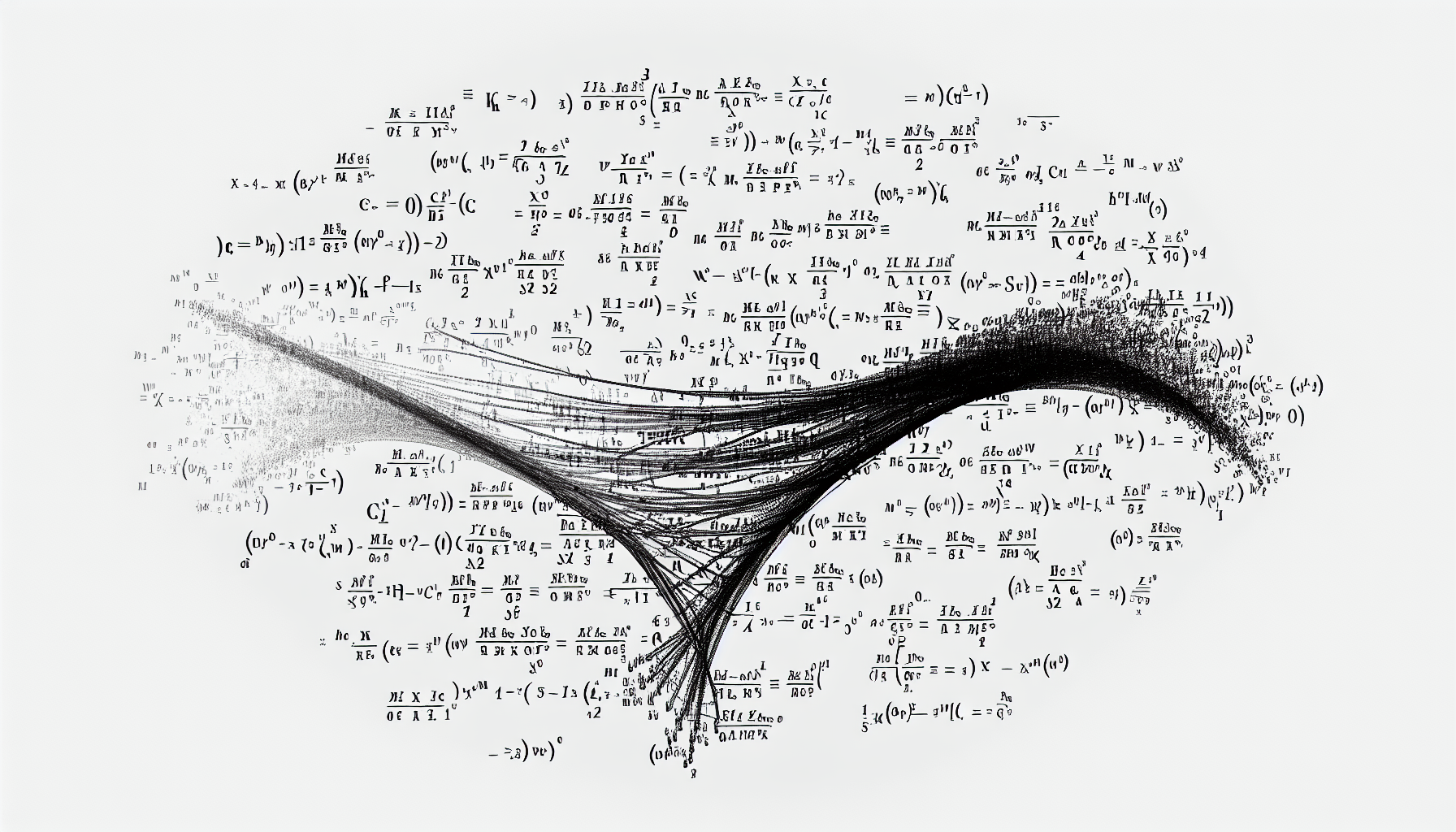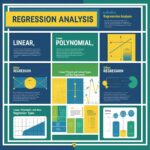Maximize the predictive power of your data with feature engineering essentials. Learn techniques to transform and optimize your data for accurate predictions.

Feature engineering is a fundamental aspect of the machine learning process, encapsulating the art and science of selecting, modifying, or creating variables—referred to as features—that improve model performance. In predictive modeling, the quality and relevance of features can significantly influence the accuracy of outcomes. The essence of feature engineering lies in transforming raw data into a format that enhances predictive abilities, thereby serving as the bridge between data collection and meaningful insights.
The significance of feature engineering cannot be overstated; it is often viewed as one of the most critical steps in the machine learning pipeline. A well-conceived feature set is vital for enabling algorithms to learn patterns in data rather than being mere statistical artifacts. This process involves continuous iteration and experimentation, requiring data scientists to leverage domain knowledge, creativity, and technical skills. By enhancing the feature space, practitioners can mitigate issues like overfitting or underfitting, which are common challenges in model training.
This blog post will delve into several essential aspects of feature engineering, including feature selection, transformation techniques, and the impact of domain knowledge. Additionally, we will explore practical examples and tools that practitioners can use to implement effective feature engineering strategies. As we advance, the importance of understanding the nuances of different features will be highlighted, underscoring that successful predictive modeling is often dependent on the effectiveness of the engineered features. By focusing on the intricacies of feature engineering, we aim to enhance your approach to data-driven decisions and predictive analytics.

Feature selection is a critical process in the realm of machine learning and data science. It involves identifying the most relevant features from a dataset that contribute effectively to the predictive power of a model. The main goal of feature selection is to improve model accuracy while simplifying the model, which ultimately leads to better performance and interpretability.
When dealing with datasets, it is not uncommon to encounter redundant or irrelevant features. Redundant features are those that provide repetitive information and do not add significant value, while irrelevant features do not have any correlation with the target variable. Including such features can result in unnecessary complexity within the model, resulting in a higher likelihood of overfitting. Overfitting occurs when a model learns from the training data to an extent that it negatively impacts its performance on unseen data. This is one of the key issues that feature selection aims to mitigate.
By selecting only the most essential features, the model can generalize better to new data, which enhances its predictive capabilities. Effective feature selection can significantly lower the dimensionality of the dataset, making it more manageable and computationally efficient for training algorithms. A streamlined model comprises fewer features, which helps in easier interpretation of the results and leads to quicker training times. Furthermore, a model that is not burdened by superfluous features has a greater chance of maintaining performance across a variety of datasets.
The implications of good feature selection extend beyond just accuracy; it can also yield insights into the underlying relationships in the data. Thus, investing time in the feature selection process is invaluable for developing robust predictive models that are capable of delivering reliable outcomes.
Data preprocessing is a crucial step in any data analysis project, particularly within the realm of feature engineering. This process involves various techniques aimed at preparing data for effective analysis and predictive modeling. As the quality of the data directly influences the performance of machine learning models, investing time in data cleaning, handling missing values, and encoding categorical variables is essential.
Initially, data cleaning focuses on identifying and rectifying errors or inconsistencies within the dataset. This could include removing duplicates, correcting formatting issues, and addressing outliers that may skew the results. Ensuring that the dataset is clean not only improves accuracy but also enhances the overall quality of the insights generated during analysis.
Handling missing values is another vital aspect of data preprocessing. Missing data can lead to biased results if not appropriately addressed, as many algorithms require complete datasets for accurate predictions. Common strategies include deleting records with missing values, imputation techniques that fill in the blanks based on existing data, or using algorithms that can handle missing data natively. Selecting the right approach depends on the context and the proportion of missing data within the dataset.
Additionally, encoding categorical variables is necessary to convert non-numeric categories into a format suitable for machine learning algorithms. Techniques such as one-hot encoding or label encoding can be utilized, enabling algorithms to interpret categorical data effectively. Each method has its advantages, and understanding when to use each is critical for maintaining the dataset’s integrity.
By systematically addressing these preprocessing tasks, data scientists can create a solid foundation for successful feature engineering. Properly prepared data is key to unlocking the potential of predictive modeling, ensuring insights derived from analysis are both accurate and actionable.
Data manipulation is a cornerstone of feature engineering, enabling data scientists to transform raw data into informative features that enhance model performance. Various techniques play a vital role in this process, including filtering, aggregating, and transforming data. Each of these techniques serves a distinct purpose and can significantly contribute to creating new features that add value to predictive models.
Filtering is a fundamental technique used to refine datasets by removing irrelevant or redundant information. This process involves applying specific criteria to isolate data subsets that are most relevant to the predictive task at hand. By filtering out unnecessary observations, data scientists can streamline their datasets, thereby reducing noise and focusing on the patterns that matter. For example, filtering can be used to exclude outliers that may distort model training or to select only the most recent data points that predict current trends more reliably.
Aggregation is another critical manipulation technique that combines multiple data points into summary statistics. Through aggregation, data can be transformed into meaningful summaries, such as calculating averages, sums, or counts within specified groups. This is particularly useful in time series analysis, where summarizing data over time intervals can uncover trends and seasonal patterns that are essential for accurate predictions. For instance, daily sales data can be aggregated into monthly totals to gain insights into overall performance and trends.
Transforming data is a technique that modifies the data’s structure to highlight underlying relationships. This can include normalizing or scaling numerical features, encoding categorical variables, or creating interaction terms that capture the synergy between features. For example, applying logarithmic transformation to skewed distributions can assist in meeting the assumptions of certain predictive models, thus enhancing their efficacy. These transformations allow data scientists to create new features that reflect complex relationships in the data, contributing to more robust predictions.
In conclusion, employing effective data manipulation techniques such as filtering, aggregating, and transforming is essential for successful feature engineering. These practices not only refine the dataset but also facilitate the creation of informative features that significantly improve predictive model accuracy.

Variable transformation is a crucial step in the feature engineering process that involves altering the characteristics of input features to improve the predictive power of models. This practice can help establish more linear relationships between features and target variables, which is essential for many algorithms that assume linearity. Common techniques for variable transformation include logarithmic transformation, scaling, and polynomial expansion.
Logarithmic transformation, for instance, is particularly useful when dealing with skewed distributions. By applying a log transformation, the data distribution becomes more symmetrical, which can lead to more reliable model estimates. Essentially, this technique reduces the impact of outliers and compresses the scale of variables, thus enhancing the linearity of relationships. Furthermore, it allows the model to capture multiplicative relationships that might otherwise be obscured.
Scaling is another vital transformation technique, typically involving standardization or normalization. Standardization adjusts the features so that they have a mean of zero and a standard deviation of one, while normalization rescales the feature values to a range, often between zero and one. These adjustments ensure that the distance between data points is appropriately represented, which is especially important in algorithms sensitive to feature scales, such as k-nearest neighbors or support vector machines.
Additionally, polynomial expansion can create new features by raising existing features to a desired power. This transformation allows for the modeling of nonlinear relationships by effectively enabling the algorithm to consider interactions between variables. However, it is crucial to apply such transformations cautiously, as they can lead to overfitting if the model becomes too complex relative to the amount of data available.
Through strategic variable transformation, data scientists can significantly enhance the performance of predictive models, ensuring that they better capture the underlying patterns in the data. Ultimately, this results in improved accuracy and more reliable predictions.
Dimensionality reduction is a critical aspect of feature engineering that simplifies complex datasets. By reducing the number of variables, or dimensions, in a dataset, we can enhance interpretability and reduce computational costs, all while retaining the essential characteristics of the data. Among the popular techniques for dimensionality reduction are Principal Component Analysis (PCA) and t-distributed Stochastic Neighbor Embedding (t-SNE).
PCA is a linear algebra-based technique that transforms the original features into a new coordinate system. The largest variance within the dataset is captured in the first few principal components, allowing us to represent the data with significantly fewer dimensions. This not only aids in visualization but also improves the performance of machine learning algorithms by minimizing noise in the data. Implementing PCA requires centering the data, followed by the calculation of the covariance matrix, followed by eigenvalue decomposition to extract the principal components.
On the other hand, t-SNE is particularly useful for visualizing high-dimensional data in a two or three-dimensional space. Unlike PCA, t-SNE is a non-linear technique that excels at preserving the local structure of the data, making it suitable for clustering analysis. It operates by embedding high-dimensional space points into a low-dimensional space while maintaining their relative distances. While the computations involved in t-SNE can be intensive, it is highly effective for tasks such as visualizing complex relationships in datasets.
When implementing dimensionality reduction techniques, it is crucial to consider the nature of the dataset and the desired outcome. Experimenting with both PCA and t-SNE can lead to different insights and enhance the predictive modeling process. Ultimately, the appropriate choice of dimensionality reduction method will depend on the specific characteristics of the data and the objectives of the analysis.
Feature engineering plays a crucial role in enhancing the predictive accuracy of machine learning models. Across various industries, organizations have employed effective feature engineering strategies to transform raw data into valuable attributes, ultimately leading to more precise predictions. One notable example can be observed in the healthcare industry, specifically in predicting hospital readmission rates. By incorporating features such as patient demographics, prior admissions, treatment plans, and socioeconomic factors, healthcare providers have augmented their models. This comprehensive feature set enables hospitals to identify high-risk patients and allocate resources efficiently, significantly reducing avoidable readmissions.
In the finance sector, effective feature engineering is key to detecting fraudulent transactions. Analysts extract features such as transaction frequency, average transaction amount, and geographic location to create a robust dataset for fraud detection algorithms. By utilizing these engineered features, financial institutions can implement machine learning models that have a higher accuracy in identifying anomalies, thereby minimizing financial losses and improving customer trust.
Furthermore, the retail industry has also experienced benefits from enhanced feature engineering. Through the analysis of customer data, including purchase history, browsing behavior, and demographic details, businesses are able to create personalized marketing strategies tailored to individual preferences. For instance, loyalty programs leveraging engineered features have led to increased customer retention and sales. By understanding which features contribute most effectively to customer engagement, retailers can optimize their promotional efforts and drive profitability.
In the field of transportation, ride-sharing companies utilize feature engineering to predict ride demand. By analyzing features such as time of day, weather conditions, and local events, these companies can anticipate spikes in demand. This foresight allows them to adjust driver availability effectively, ensuring both customer satisfaction and operational efficiency.
These examples illustrate that effective feature engineering serves as a cornerstone for enhancing predictive models across various fields. Organizations that adopt comprehensive feature engineering methodologies witness substantial improvements in their model outcomes, thereby gaining a competitive edge in their respective industries.

Statistical analysis plays a crucial role in the realm of feature engineering, serving as the foundation upon which meaningful features are identified and derived. The application of statistical techniques allows data scientists to explore, summarize, and make inferences about data, ultimately enhancing the model’s predictive capabilities. Through rigorous analysis, one can identify important features that significantly contribute to the outcome variable, thereby enabling more accurate predictions.
One common method deployed in feature selection is the computation of correlation coefficients, which quantify the strength and direction of relationships between features. A high correlation between a feature and the target variable suggests that it may be useful in predictive modeling. Conversely, features with little to no correlation may be less relevant and could potentially be removed to simplify models and reduce overfitting.
Moreover, various statistical tests, such as the Chi-squared test and t-test, can be employed to evaluate the significance of features. The Chi-squared test is particularly useful in categorical data analysis, helping to determine whether the observed frequencies differ from expected frequencies under the null hypothesis. Meanwhile, the t-test provides insight into the means of different groups and can highlight whether specific features yield significantly different outcomes across those groups.
Descriptive statistics, including measures of central tendency (mean, median, mode) and measures of variability (variance, standard deviation), also play a vital role in feature engineering. These metrics provide insights into the underlying distribution and properties of the data, enabling data scientists to make informed decisions about which features to include in their models. Various graphical methods, such as box plots and histograms, can further facilitate understanding and interpretation of the data features, revealing potential outliers and distribution shapes.
Feature engineering is a critical step in the data preparation phase, as the quality of features directly influences predictive model performance. After identifying and creating potential features, it is imperative to test and validate them to ensure their effectiveness in model training. Two primary methods for achieving this are cross-validation and feature importance ranking.
Cross-validation is a robust technique employed to evaluate the predictive performance of a model. By partitioning the data into training and testing sets, cross-validation allows for the assessment of how well the model generalizes to unseen data. The most common approach, k-fold cross-validation, involves dividing the dataset into k subsets and iteratively training the model k times, each time using a different subset as the testing set while the remaining k-1 subsets are used for training. This method helps in assessing the stability and reliability of the features being utilized.
Another vital aspect of feature validation is feature importance ranking. Various algorithms provide insights into the significance of each feature within the predictive model, thereby facilitating informed decisions about which features to retain or discard. Techniques such as tree-based methods, including Random Forests and Gradient Boosting Machines, offer built-in mechanisms for assessing feature importance. This information is invaluable in guiding the selection and enhancement of features, as it highlights which ones contribute most to the model’s predictive capability.
Iterating through feature engineering based on validation outcomes is essential for refining model performance. If certain features are found to have low importance or negatively impact prediction accuracy, it may be necessary to revisit the feature creation process. This could involve combining, transforming, or even eliminating features based on analytical insights gained from validation metrics. Through this iterative approach, practitioners can systematically enhance their models, leading to more accurate predictions and improved overall performance.
Feature engineering is a critical component of the machine learning workflow, yet practitioners often encounter several challenges that can hinder model performance. One major pitfall is the misconception that more features always lead to better predictions. In reality, adding irrelevant or redundant features can introduce noise into the model. This may confuse the algorithm and lead to overfitting, where the model learns the training data too well and performs poorly on unseen data. Therefore, it is crucial to strike a balance between having enough features to capture the complexity of the data while avoiding unnecessary ones.
Another common mistake lies in the understanding of feature selection techniques. Many practitioners may rely solely on automated feature selection methods without considering the underlying domain knowledge. Automated techniques, like recursive feature elimination or tree-based feature importance, can be insightful, but they may not capture the subtleties that an expert familiar with the domain could provide. Integrating expert knowledge during feature selection ensures that the most relevant features are maintained while discarding less informative ones.
In addition to feature selection, feature transformation is another area where missteps can occur. Many practitioners might incorrectly assume that transformations like scaling or encoding are adequate solutions without examining the nature of the data. For instance, using a linear transformation on highly skewed data may not yield the desired normalization. It is essential to analyze the distribution of each feature and choose transformations that make sense for the specific dataset. Also, being aware of how transformed features can interact with one another in a model is crucial for avoiding misleading results.
To prevent these pitfalls, practitioners should take a methodical approach to feature engineering, combining automated techniques with domain knowledge and a thorough understanding of the data. Such diligence can greatly enhance model performance and lead to more accurate predictions.

Feature engineering is a crucial aspect of the data preparation process, significantly influencing the performance of machine learning models. To enhance your feature engineering processes, consider the following actionable tips that can benefit both newcomers and seasoned practitioners alike.
First, always begin with thorough exploratory data analysis (EDA). This initial step allows for a comprehensive understanding of the dataset, revealing trends, correlations, and anomalies that can inform the feature engineering process. Use visualization tools and statistical summaries to gain insights into the data’s structure and distribution. This understanding can guide the creation of new features and the selection of relevant existing ones.
Second, prioritize domain knowledge. Engaging with domain experts can provide valuable context about the data, helping to identify potential features that might not be obvious from a statistical standpoint. Domain-specific insights can lead to the derivation of powerful features that improve model performance, adding depth to the feature set.
Third, consider feature selection techniques to streamline your dataset. Not all features contribute equally to predictive power; hence, eliminating redundant or irrelevant features can enhance model interpretability and efficiency. Techniques such as Recursive Feature Elimination (RFE) or feature importance scores can help identify key predictors while discarding those that may introduce noise.
Additionally, leverage feature transformation methods to create more effective representations of the data. Techniques like scaling, normalization, and encoding categorical variables can significantly impact model performance. Be thoughtful about the transformations applied, ensuring they align with the nature of the data and the requirements of the chosen machine learning algorithms.
Finally, continuously iterate on your feature engineering efforts. Machine learning is an iterative process; therefore, regularly updating and refining features based on model feedback can lead to improved predictions over time. Testing various combinations and transformations of features can unlock greater insights and performance gains.
Feature engineering is a critical process that improves model performance by transforming raw data into a format that is more suitable for machine learning algorithms. Understanding how to measure the impact of these engineered features on a model’s performance is essential for data scientists aiming to optimize their predictive capabilities. There are several metrics available to gauge this impact effectively.
One of the most common approaches is to evaluate model performance before and after feature engineering using standard metrics such as accuracy, precision, recall, and F1 score. These metrics provide quantitative assessments of how well a model makes predictions based on the input it receives. By comparing these performance indicators from the initial model (often referred to as the baseline model) to the model that is augmented with engineered features, you can clearly observe the enhancements brought about by the feature engineering process.
Another effective method is through the use of cross-validation, which entails splitting the dataset into different subsets to ensure the results are robust and not overly reliant on a specific training-test split. This technique helps quantify the generalization ability of the model across various datasets. Further, utilizing techniques such as the Area Under the Curve (AUC) for Receiver Operating Characteristic (ROC) analysis can also provide insights into the trade-offs between true positive rates and false positive rates.
Moreover, visualizing the performance metrics through comparative plots helps in understanding the improvements brought on by feature engineering. Such visualization tactics, including confusion matrices, can demonstrate how different features contribute to distinguishing between classes. By consistently applying these methodologies, data scientists can more accurately assess the impact of feature engineering, ultimately leading to refined models that achieve better predictive outcomes.

As we delve into the realm of feature engineering, it becomes evident that this practice is pivotal for enhancing predictive accuracy in machine learning models. Key takeaways from our discussion underline the importance of selecting, transforming, and creating features that genuinely represent the underlying phenomena within the data. Effective feature engineering not only facilitates better model performance but also aids in mitigating problems related to overfitting and bias. The essence of this discipline lies in its ability to translate raw data into meaningful input for algorithms, serving as a foundation for successful predictive analytics.
Looking ahead, the field of feature engineering is poised for significant advancements driven by emerging trends. Automation stands at the forefront, with various tools and frameworks now available that enable the automatic generation and optimization of features. Techniques such as automated feature engineering can vastly reduce the time and expertise required, democratizing access for practitioners who may lack deep statistical knowledge. Additionally, the advent of increasingly sophisticated algorithms, including deep learning models, pushes the boundaries of how features can be extracted from complex data structures like images and text.
Another trend is the growing integration of domain expertise into feature engineering processes. As industries recognize the value of combining technical prowess with subject matter knowledge, predictions suggest that hybrid approaches will yield superior results in model development. Furthermore, the utilization of advanced techniques such as natural language processing and time-series analysis is set to redefine how features are generated, further ensuring accurate and insightful predictions.
In conclusion, the future of feature engineering looks promising, highlighting its indispensable role in successful data science practices. As we embrace automation, interdisciplinary collaboration, and innovative methodologies, the potential for unlocking previously hidden insights within data grows dramatically. This evolution underscores the necessity for continuous learning and adaptation within this critical domain of predictive modeling.
Looking to advertise, promote your brand, or explore partnership opportunities?
Reach out to us at
[email protected]












Chose where you want to study, and we will let you know with more updates.